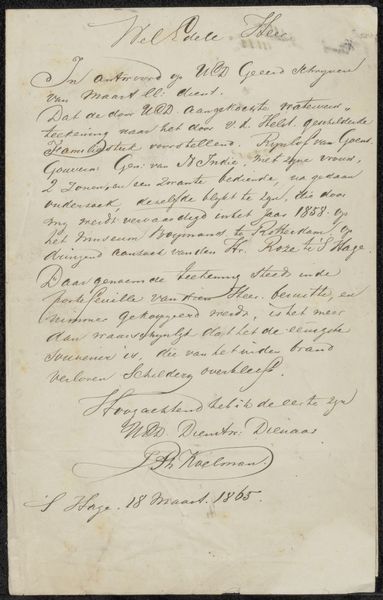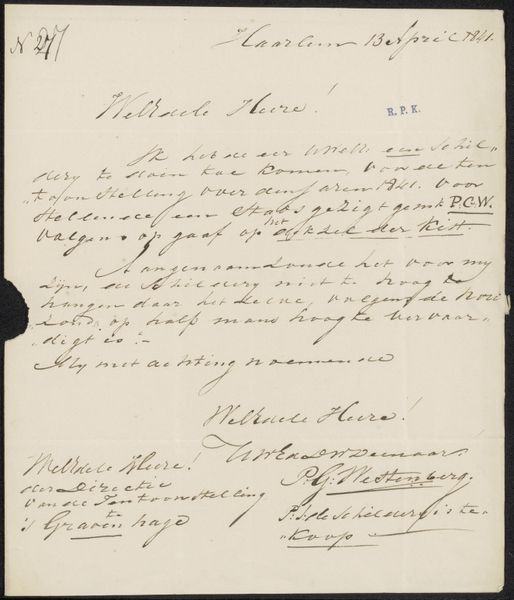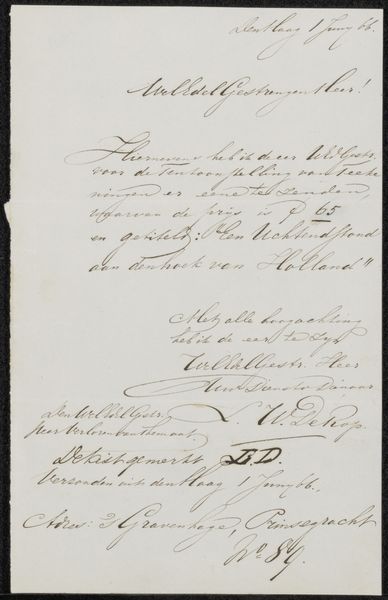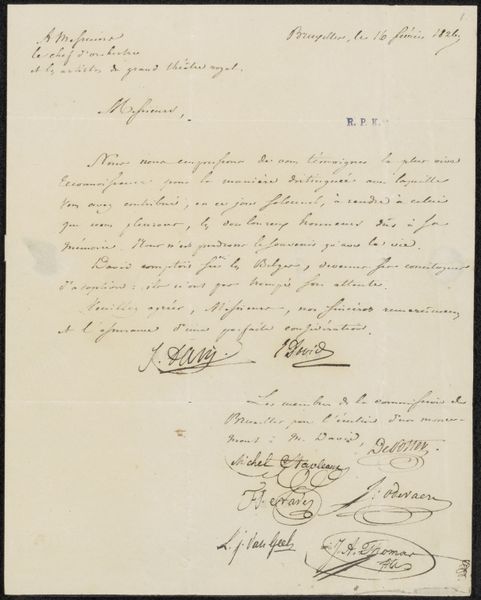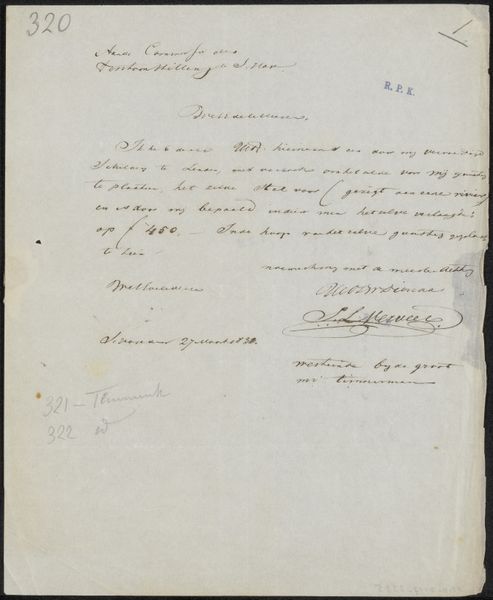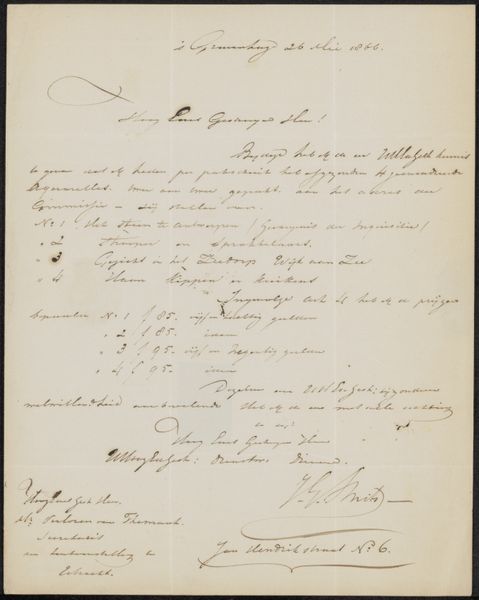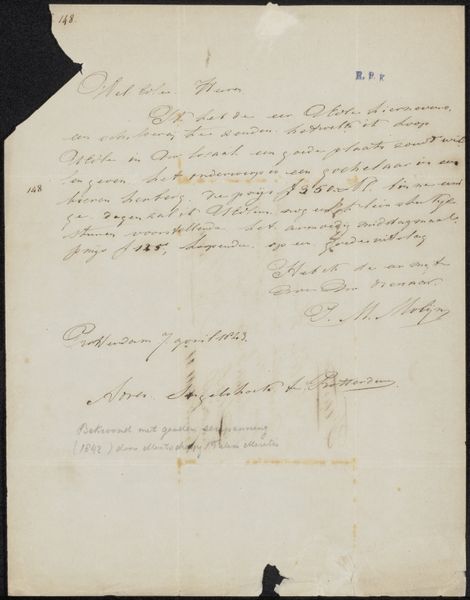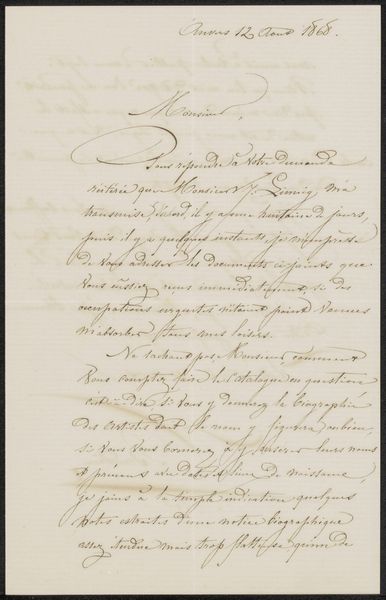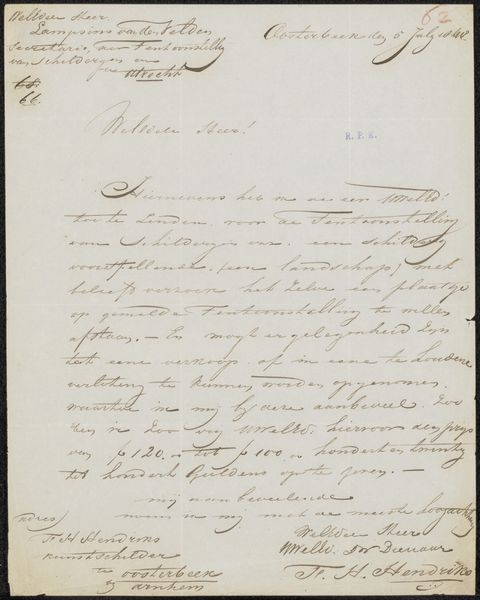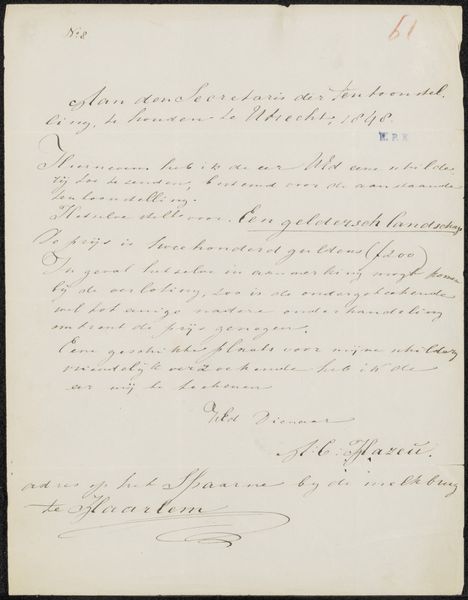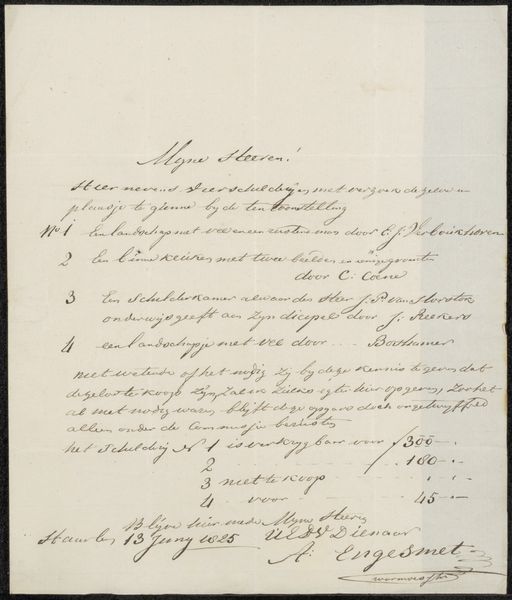
Brief aan jonkheer H.P.F. Hooft, secretaris van de commissie van de Tentoonstelling van Levende Meesters in Den Haag 1826 - 1844
0:00
0:00
drawing, paper, ink, pen
#
portrait
#
drawing
#
pen sketch
#
paper
#
ink
#
romanticism
#
pen work
#
pen
Copyright: Rijks Museum: Open Domain
Curator: Today, we're looking at a letter by Samuel de Vletter, entitled "Brief aan jonkheer H.P.F. Hooft, secretaris van de commissie van de Tentoonstelling van Levende Meesters in Den Haag." It seems to have been penned between 1826 and 1844, with ink on paper. Editor: The delicate cursive script immediately strikes me. It feels quite formal and a little bit fragile, doesn't it? I notice a tear along the top edge; it adds a sense of vulnerability. Curator: It’s interesting to see how artists engaged with institutions in those days. De Vletter writes to H.P.F. Hooft, the secretary of a commission for a Live Masters exhibition in The Hague. It’s a direct plea, a subtle attempt to influence the selection process. This demonstrates the artist's efforts to achieve recognition. Editor: I see. The penmanship is elaborate. Each stroke carries an incredible lightness. See how the flourishing ascenders and descenders almost float above and below the body of the text? It gives the whole letter an airy quality. Curator: Right. The content suggests he wants to exhibit a painting depicting Sabina van Beijeren, Countess of Egmond. What is particularly interesting is that this committee decided who got to show where; shaping public perception. De Vletter needed their approval. Editor: There’s definitely an appeal here, a visual dance between control and freedom in the lines. Do you think he got into the exhibition? Curator: Alas, I'm not entirely sure. We’d need more archival digging to be certain, I suspect. Regardless, this gives us a window into the art world of the period, and how closely enmeshed it was with both the state and artistic society. Editor: Well, seeing such attention to detail displayed on an everyday correspondence reminds you of art's integration into all aspects of 19th-century life. Curator: Absolutely. And, looking at it now, this letter serves as both a historical document and, dare I say, a small work of art in itself.
Comments
No comments
Be the first to comment and join the conversation on the ultimate creative platform.
